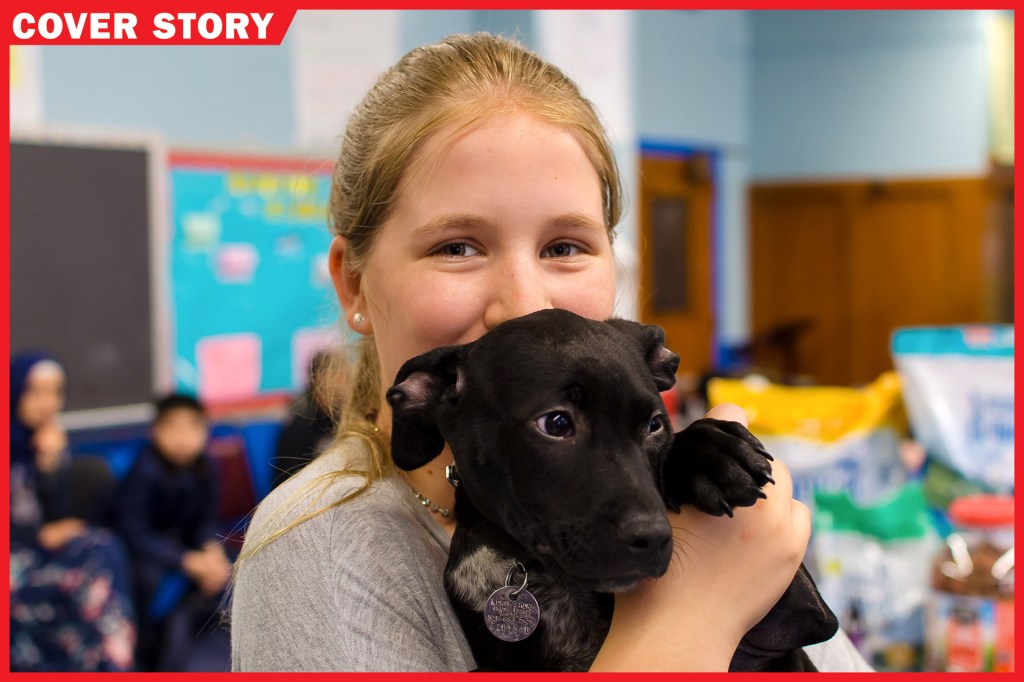
“Hi, Brody! Hi, Shelby!” Abby Walker says as she enters her principal’s office. Brody, a mix of Labrador retriever, Great Dane, and German shepherd, runs toward her. Shelby, a border collie mix, is also eager to be petted.
Abby, 13, is a student at Shell Bank, a junior high school in Brooklyn, New York. Brody belongs to Principal Teri Ahearn, and Shelby belongs to a teacher. It’s July, and even though Abby is off for summer break, she likes to visit the pups. They’re at the school year-round. “When I was new to Shell Bank in sixth grade, it was hard to settle down,” Abby told TIME for Kids. “But once I met the dogs, they relaxed me, and they helped me meet new people.”

BACK RUBS A student at Shell Bank, in Brooklyn, New York, pets a relaxed Brody.
STEPHEN BLUE FOR TIME FOR KIDSClass Pets
Teachers at Shell Bank use Brody and Shelby as part of the Mutt-i-grees Curriculum
curriculum
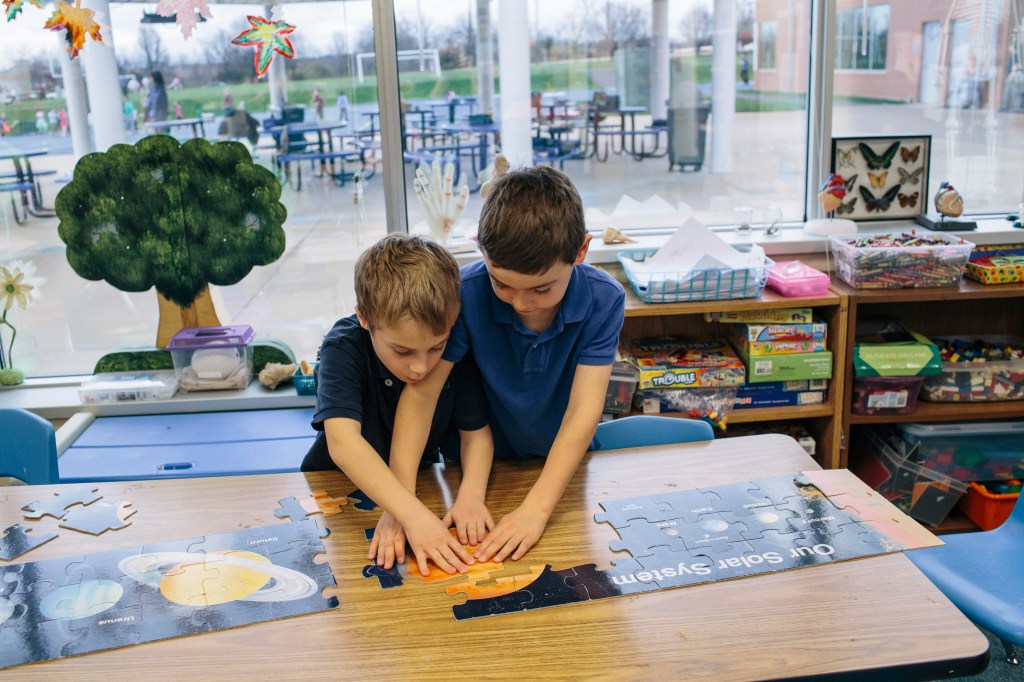 THE WASHINGTON POST—GETTY IMAGES
a set of courses or lessons taught by a school
(noun)
The solar system is part of our science curriculum this semester.
. The program brings canines into classrooms. Yale University’s School of the 21st Century and the Pet Savers Foundation, a division
division
THE WASHINGTON POST—GETTY IMAGES
a set of courses or lessons taught by a school
(noun)
The solar system is part of our science curriculum this semester.
. The program brings canines into classrooms. Yale University’s School of the 21st Century and the Pet Savers Foundation, a division
division
 TNS—GETTY IMAGES
one segment of a whole
(noun)
Disney Parks is a division of The Walt Disney Company.
of New York’s North Shore Animal League America, created Mutt-i-grees in 2010. The curriculum is designed to help students develop empathy
empathy
TNS—GETTY IMAGES
one segment of a whole
(noun)
Disney Parks is a division of The Walt Disney Company.
of New York’s North Shore Animal League America, created Mutt-i-grees in 2010. The curriculum is designed to help students develop empathy
empathy
 LIGHTFIELDSTUDIOS/GETTY IMAGES
the ability to understand another’s feelings
(noun)
Reading helps you develop empathy.
and build positive relationships, and it uses dogs to teach important lessons.
LIGHTFIELDSTUDIOS/GETTY IMAGES
the ability to understand another’s feelings
(noun)
Reading helps you develop empathy.
and build positive relationships, and it uses dogs to teach important lessons.
“Dogs can teach you how to read emotion,” Matia Finn-Stevenson says. She is the director of the School of the 21st Century. She says the curriculum trains students to look at a dog’s body language to understand how the animal feels. “Students ask themselves, ‘Is the dog wagging its tail? Is it shaking? And what does this show about the dog’s emotions?’ You can apply this skill to people, too,” Finn-Stevenson explains. “By learning how to read a dog’s body language, you can learn how to read people’s body language and see how they feel.”
Mutt-i-grees also teaches the importance of rescuing pets from animal shelters
shelter
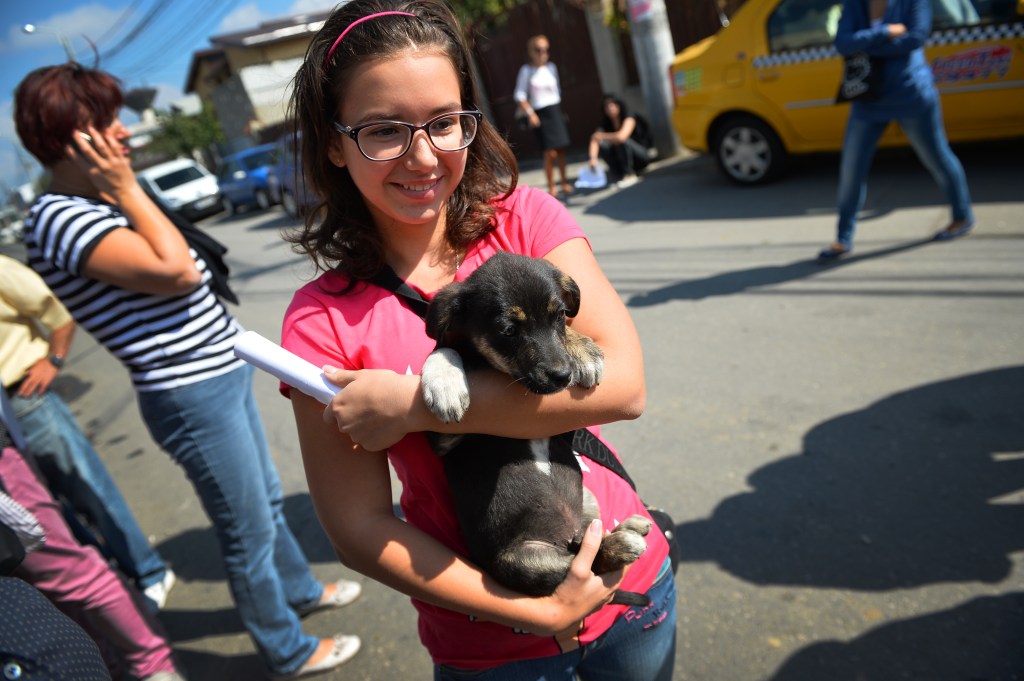 DANIEL MIHAILESCU/AFP/GETTY IMAGES
a place that provides protection
(noun)
We visited three animal shelters before we adopted our dog, Langston.
(see sidebar, "By the Numbers"). Often, pets end up at shelters because they are lost, abandoned, or surrendered by an owner who can no longer care for them. Brody and Shelby were adopted from a shelter. They have found a happy home at Shell Bank. “The dogs have made kids feel better about themselves and feel better about school,” Principal Ahearn says.
DANIEL MIHAILESCU/AFP/GETTY IMAGES
a place that provides protection
(noun)
We visited three animal shelters before we adopted our dog, Langston.
(see sidebar, "By the Numbers"). Often, pets end up at shelters because they are lost, abandoned, or surrendered by an owner who can no longer care for them. Brody and Shelby were adopted from a shelter. They have found a happy home at Shell Bank. “The dogs have made kids feel better about themselves and feel better about school,” Principal Ahearn says.
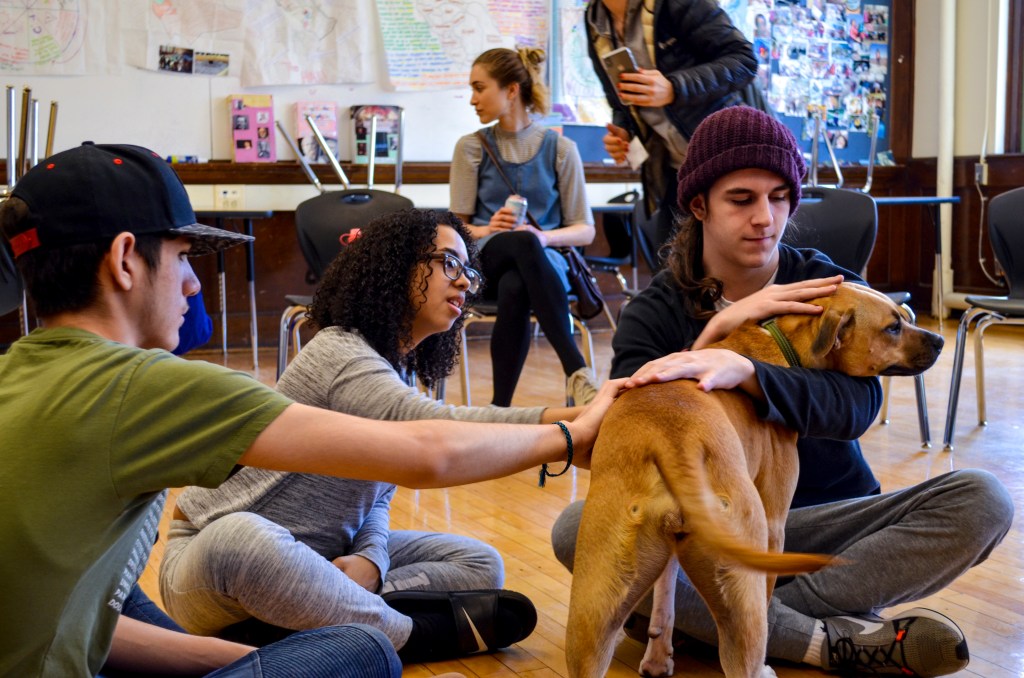
LESSONS ON A LEASH Students at Fenway High School, in Boston, learn empathy from dogs.
COURTESY MAXIMILLIAN EISENBERGA School’s Best Friend
More than 4,000 schools, libraries, and community centers across the United States and Canada teach the Mutt-i-grees Curriculum. In Lemay, Missouri, Marion Endress, a teacher at Hancock Place Elementary, uses her own rescue dog, Desi, to lead lessons in compassion
compassion
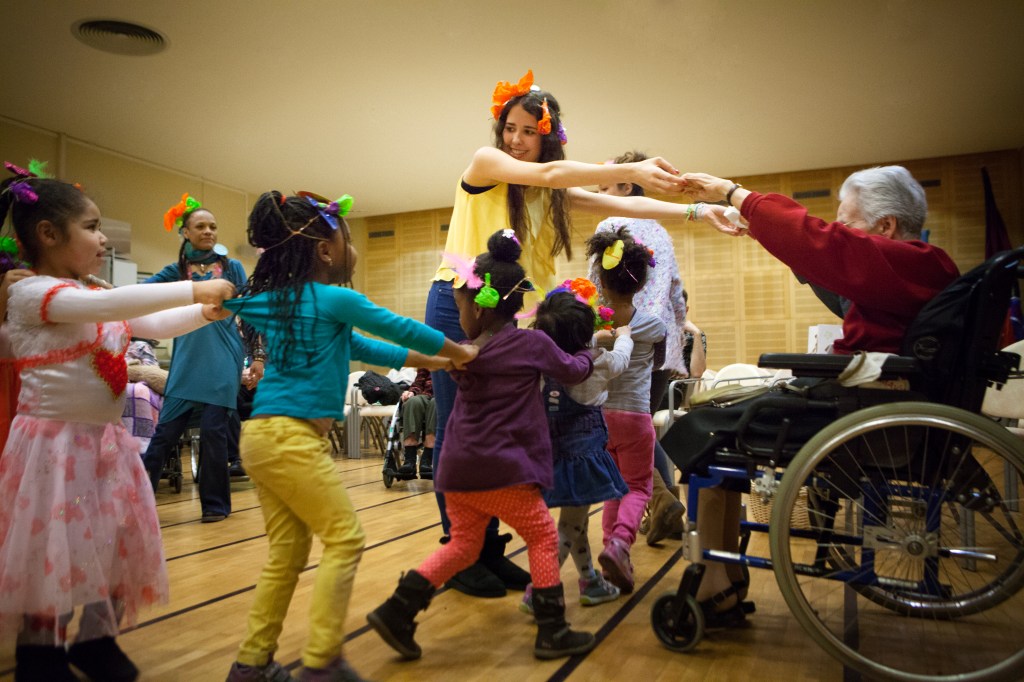 BSIP/UIG—GETTY IMAGES
a feeling of sympathy
(noun)
I volunteer at the nursing home because I have compassion for elderly people.
. “Before Desi was adopted, he was treated badly,” Endress says. “My students and I discuss the consequences
consequence
BSIP/UIG—GETTY IMAGES
a feeling of sympathy
(noun)
I volunteer at the nursing home because I have compassion for elderly people.
. “Before Desi was adopted, he was treated badly,” Endress says. “My students and I discuss the consequences
consequence
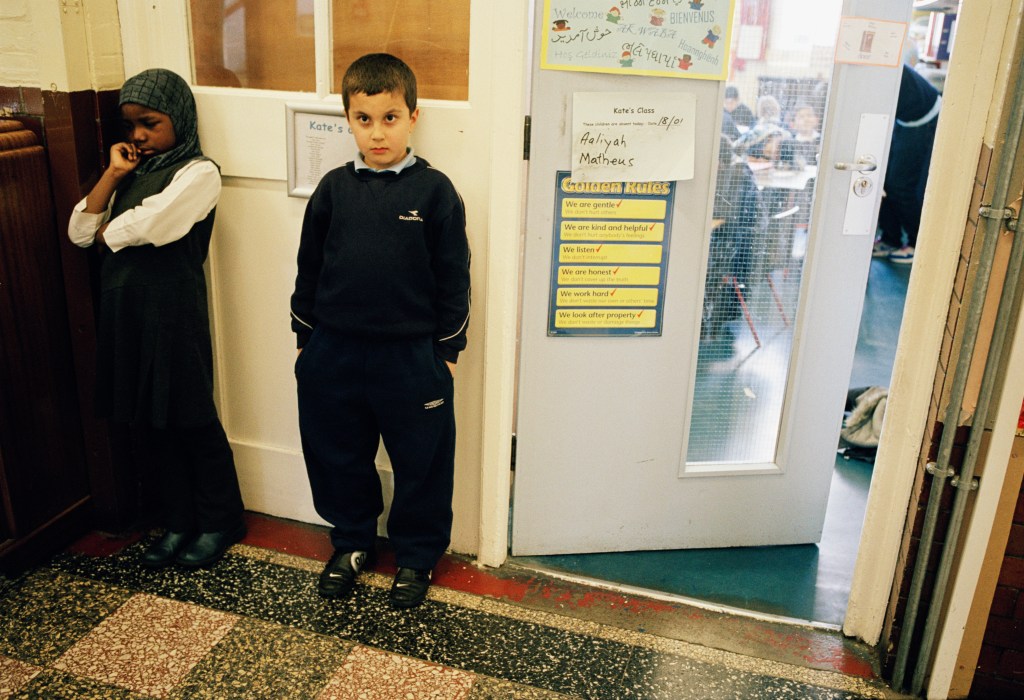 GIDEON MENDEL/CORBIS—GETTY IMAGES
the result of an action
(noun)
Detention is a possible consequence of misbehaving in class.
of bullying and how we can prevent bullying with the people in our lives, too.”
GIDEON MENDEL/CORBIS—GETTY IMAGES
the result of an action
(noun)
Detention is a possible consequence of misbehaving in class.
of bullying and how we can prevent bullying with the people in our lives, too.”
Mutt-i-grees also encourages kids to support shelters and the animals they care for. Shell Bank, for example, organized a fundraising effort. Sal Amato, 15, says, “We raised $500 and used it to buy food for the pets.”
Sal recently graduated from Shell Bank. Like Abby, he still visits his furry friends, Brody and Shelby. Mutt-i-grees has helped him feel more motivated to do well in school. “My grades have gone up,” Sal says as he pets the friendly mutts. “And it’s all because of these guys.”
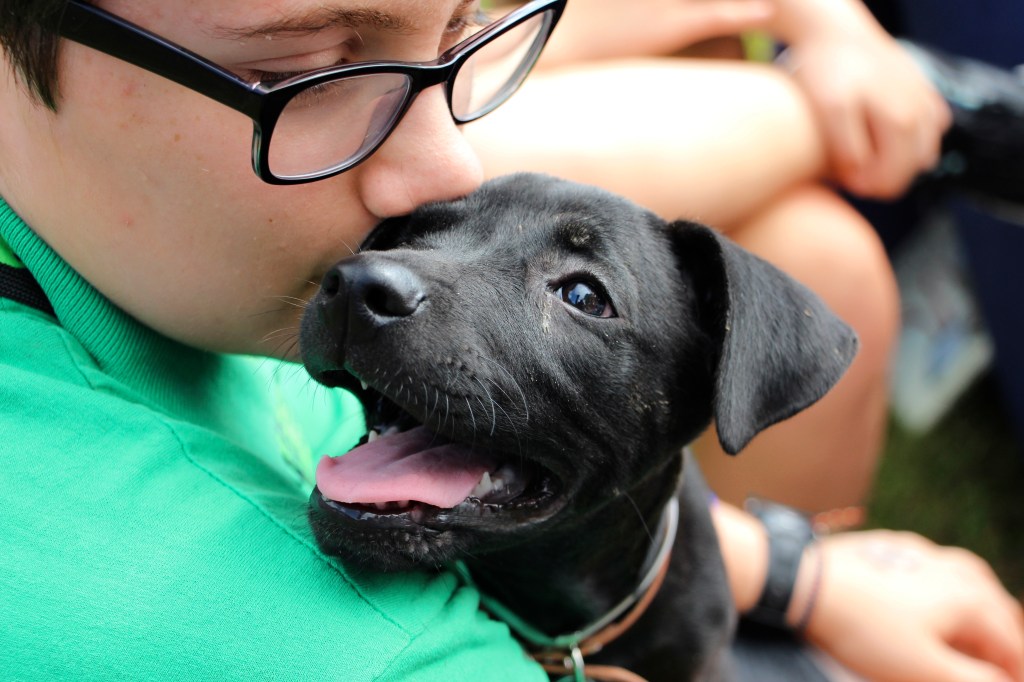
PUPPY LOVE A rescue pup gets a hug at Stepping Stones Museum for Children, in Connecticut.
COURTESY MAXIMILLIAN EISENBERGBy the Numbers
Each year, millions of pets end up in animal shelters. The numbers below show the extent of the problem. They also offer hope: Each year, more than 1 million dogs are rescued and wind up in loving homes. Don’t worry, cat fanciers. The figure is the same for felines.
Approximately 6.5 million companion animals enter U.S. animal shelters every year.
Of those, around 3.3 million are dogs.
An estimated 1.6 million dogs are adopted from shelters every year.
Stop & Think! Whom did the author interview for the article? What perspective does each bring to the story? If you could hear from more people, who would they be, and why?
Assessment: Click here for a printable quiz. Teacher subscribers can find the answer key in this week's Teacher's Guide.










